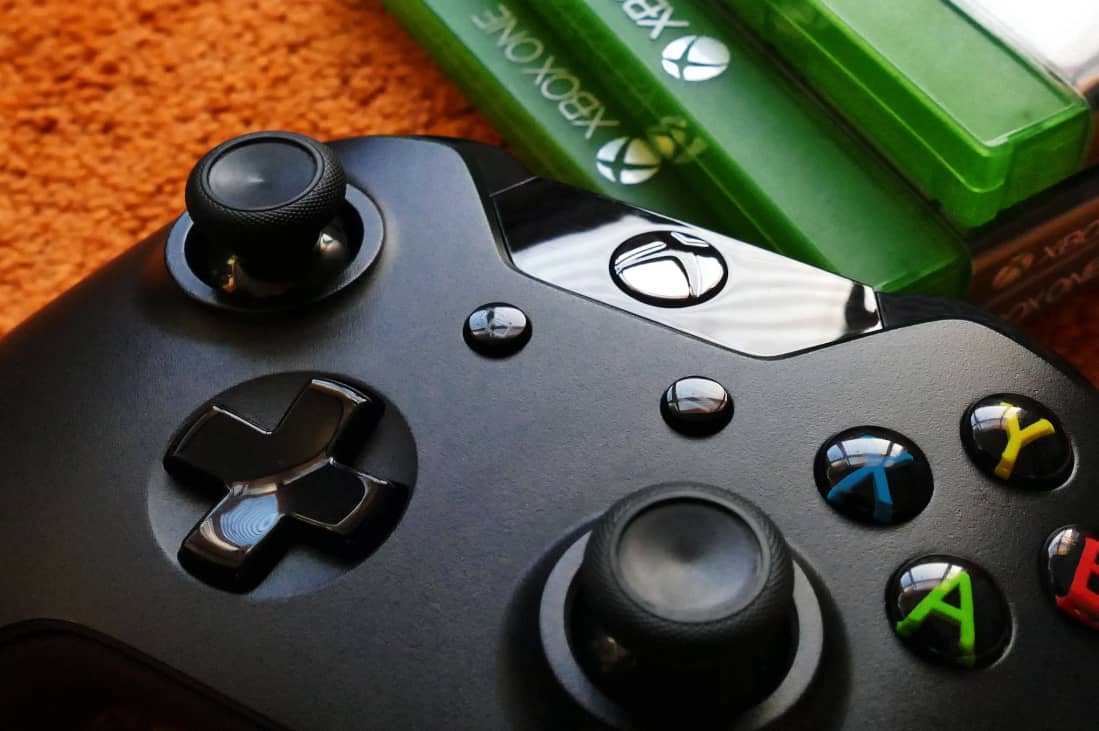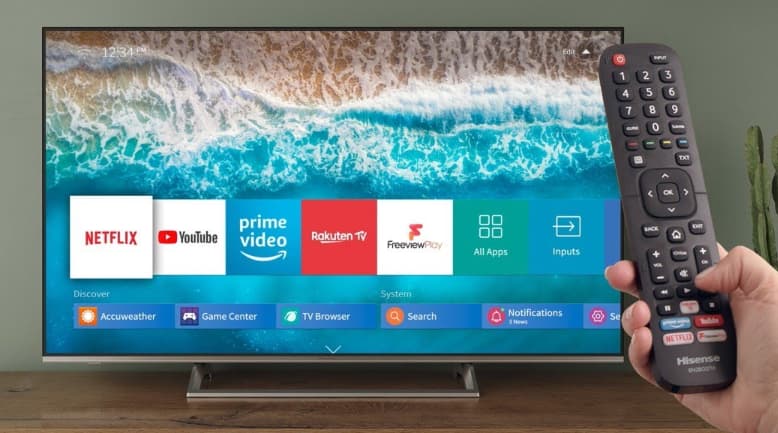You pick up your Xbox controller, press the Xbox button to turn it on and see the lights start flashing. You try connecting it to your Xbox console, but no matter what you do, it won’t stay connected. This can be incredibly frustrating when you just want to play your favorite game.
If your Xbox controller is blinking and failing to connect properly, don’t worry – there are several potential causes and fixes to try.
Why Is My Xbox One Controller Flashing And Not Connecting?

In this comprehensive guide, we’ll explore the most common reasons an Xbox controller may flash and not connect, along with the best troubleshooting tips to get you back in the game quickly.
In Summary:
Here are the key things we’ll cover about flashing Xbox controllers that won’t connect:
- The most common reasons an Xbox controller blinks and won’t connect
- A low or dying battery
- Syncing and connection issues
- Hardware or firmware problems
- Interference from other devices
- How to test and charge your Xbox controller’s batteries
- Steps to re-sync your controller with your Xbox console
- Tips for checking controller cables, console power, and connections
- How to power cycle your controller and console
- Updating your Xbox controller firmware
- Use a USB cable to connect your controller
- Cooling down an overheating console
- Reverting controller firmware updates
- Switching to alternate consoles or power outlets
- Preventative steps to avoid Xbox controller issues
First, let’s look at why Xbox controllers often blink when there’s a connectivity problem.
Why is my Xbox Controller Blinking or Flashing?
The lights on your Xbox wireless controller will typically flash or blink for a few key reasons:
- Fast blinking – The controller is trying to sync and connect to the Xbox console
- Slow blinking – The controller battery is low or dying
- Flashing non-stop – There is likely a connection problem or hardware/firmware issue
Below are the most common root causes of an Xbox controller blinking and being unable to reliably connect to your Xbox:
-
1. Low or Dying Controller Battery
If the battery in your Xbox controller is running low on charge or is old and dysfunctional, this can cause connectivity problems. As the battery loses power, it has trouble maintaining a consistent connection.
Slowly blinking lights, especially when trying to power on your controller, indicate the batteries need to be charged or replaced.
-
2. Syncing Issues
Xbox controllers can only connect to one device at a time. If you’ve synced your controller in the past with another device like a phone, PC, or different Xbox, this could prevent it from syncing properly with your current console.
Flashing lights during the sync process usually indicate a problem with controller pairing.
-
3. Firmware/Hardware Issues
Outdated, corrupt, or incompatible controller firmware versions can cause wireless connectivity problems. Failing controller hardware like the sync button, transmitter, receiver, or battery clip can also prevent a proper console link from being established.
If there are underlying firmware or hardware faults, you may notice flashing controller lights non-stop, even with charged batteries.
-
4. Interference From Other Devices
Nearby electronic devices using the 2.4Ghz frequency like wifi routers, Bluetooth gadgets, and even microwaves can produce interference – blocking your controller’s wireless signals to and from the Xbox console.
This can randomly cause connectivity dropouts, with your controller lights blinking every time it loses contact.
Now that you know why Xbox controllers can blink and fail to connect, let’s go through some troubleshooting tips to get yours working properly again.
Test the Batteries in Your Xbox Controllers
The first thing to check with a flashing controller is the battery charge level. If you haven’t changed batteries or charged rechargeable packs in a while, insufficient power could be the culprit.
- For Xbox One controllers, use your Play & Charge Kit if you have one. This battery pack plugs into any USB port using the included cable to recharge
- For Xbox Series X|S wireless controllers, connect your Xbox rechargeable battery to the console using the supplied USB-C cable
- Alternatively, insert new AA batteries to see if this stabilizes connectivity
If charging or new batteries don’t fix your still blinking controller, try cleaning battery contacts with a dry cloth before replacing the battery pack completely.
Re-sync Your Xbox Controller
Syncing issues, even when batteries are charged, can cause intermittent connectivity – identifiable by flashing controller lights. Controllers can only sync to one device at a time.
If you’ve connected previously to a phone, PC, or different Xbox console, you’ll need to manually re-sync back to your current Xbox.
Follow these steps:
- Turn on your Xbox console
- Press the Xbox button on your controller to power it on
- On your Xbox, press and release the Pair button
- On Xbox One consoles, the Pair button is on the side by the USB port
- On Xbox Series X|S, it’s located on the front towards the bottom
- Press and hold the Pair button on your controller till the Xbox button flashes rapidly
- Wait for the Xbox button to become solidly lit when syncing finishes
You may also have to disconnect other Bluetooth pairings like on a PC before your controller will sync properly with your Xbox console again.
Try Reconnecting the Console and Cables
It’s not common, but sometimes console network or connection problems can stop a controller from syncing correctly:
- Reseat console network cables at both ends to eliminate any false contacts
- Directly connect your Xbox console to the modem, not via your home network
- In the Xbox settings, run a full console restart and a network connection test when powered back on
If connection tests now pass but your controller keeps blinking, there’s likely another underlying issue.
Power Cycle Your Xbox Controller and Console
Resetting power on malfunctioning devices often fixes software glitches causing connectivity issues:
- Controller – Press and hold the Xbox button for 10+ seconds, wait briefly, then power back on.
- Console – Press and hold the console Power button for 10 seconds to fully shut down, then restart.
Try updating your controller after power cycling both units.
Check the Firmware Updates
Old or incompatible controller firmware is a common source of wireless connectivity problems.
- New Xbox controllers can update wirelessly.
- Older controllers need a USB connection to receive firmware updates.
Here’s how to check for Xbox Wireless Controller firmware updates:
Wireless Controller Update:
- Press the Xbox button and go to Settings > Devices & Connections > Accessories.
- Select your controller and click the “…” button.
- Choose Firmware version – if an Update is available, select it.
- Follow the onscreen instructions to complete the wireless installation.
Controller update via USB:
- Connect your controller to the Xbox via USB cable
- Keep the controller powered on and connected during the firmware installation
Controller Update via PC:
- Download the Xbox Accessories app from the Microsoft Store.
- Connect the Xbox controller to the PC via USB or Xbox wireless adapter.
- If the Update Required message appears during pairing, select it to install the latest firmware version.
Updating to the newest firmware is often key to resolving elusive connectivity issues.
Try Connecting Your Xbox Controller With a USB Cable
Bad wireless connections cause most flashing controller lights. Using a wired USB connection helps diagnose where problems lie:
- For Xbox One controllers, use a micro-USB cable
- For Xbox Series X|S controllers + Xbox Adaptive Controller + Xbox Elite Series 2, you need a USB-C cable
Steps:
- Connect the USB cable to the controller
- Connect the other end to the Xbox console USB port
- If used on a Windows PC, Xbox controller drivers should install automatically
- Test controller function – if problems persist, the issue lies with the console or battery
USB cables can also provide power to help keep battery packs charged during long gaming sessions.
Cool Down the Power Supply and Console
Electronic devices are designed to power down if they overheat, to prevent permanent damage.
If your Xbox console or power brick feels hot to the touch for extended periods, this can start interrupting connectivity – manifesting as a blinking controller.
- Check console positioning – it needs open space for airflow
- Don’t stack objects on top obstructing ventilation
- Clean dust build up and debris from console vents
Once cooled down, your Xbox should maintain a stable connection during gaming.
Revert the Firmware on Your Controller
For Xbox controllers connecting to non-Xbox devices via Bluetooth, recent firmware updates can break compatibility.
If your controller worked previously but now won’t stay connected to phones, tablets, etc – rolling back firmware can resolve this:
- Plug the controller into Xbox via USB cable
- Open the Xbox Accessories app > Check controller firmware
- If available, choose the option to revert to the older firmware version
Downgrading to a backward-compatible firmware build allows Bluetooth connectivity once again.
Try Switching to a Different Console or Power Outlet
Electrical interference can prevent Xbox wireless controllers from maintaining a steady link. Alternate locations help determine if environmental factors are at play:
- Take your blinking controller to a friend’s house with an Xbox console
- Move your entertainment setup to another power outlet in your home
If controller connectivity improves in a different physical location, electrical interference is likely causing the blinking and dropout issues.
Fix Xbox Controller Issues Before They Arise
Here are some preventative maintenance tips for avoiding connectivity problems with Xbox wireless controllers in the future:
- Check battery terminals regularly and clean any corrosion
- Replace rechargeable battery packs once capacity drops significantly
- Keep controller firmware updated via the Xbox Accessories app
- Use wired USB connections for lag-sensitive competitive gaming
- Unplug wireless controllers before directly connecting via USB
- Know how to power cycle and re-sync properly malfunctioning units
Following best practice guidelines minimizes controller connectivity problems during intense gaming sessions.
More Useful Guides:
FAQs about Xbox Controller Not Connecting
Below are answers to 10 frequently asked questions about flashing Xbox controllers that fail to reliably link to the console or other Bluetooth devices:
- Q1. Why is my Xbox controller blinking and not connecting?
If your Xbox controller won’t stop flashing, the most common causes are low battery, syncing problems, electrical interference, and hardware/firmware faults. Refer to the troubleshooting tips in this guide.
- Q2. Why is my Xbox controller flashing slowly?
Slow flashing from an Xbox controller usually indicates a low battery charge needing to be replenished by new batteries or recharging the pack.
- Q3. Why is my Xbox controller flashing after a firmware update?
Recently updated controller firmware often causes temporary connectivity issues. Try power cycling the controller and console before rechecking firmware versions.
- Q4. Why does my Xbox controller not stay powered on?
If your Xbox controller won’t stay powered on, the problem is almost always an aging battery no longer holding sufficient charge. Replace batteries or rechargeable packs.
- Q5. How do I stop my Xbox controller from randomly disconnecting?
Blinking controller indicating random disconnections can be caused by interference, outdated firmware, iffy cables/ports, or extreme console overheating. Refer to the troubleshooting guide.
- Q6. Why does my Xbox controller keep losing sync?
Sync issues arise if the controller is paired previously with another device. Manually re-sync with the current Xbox console using the described 10-15 second button press process.
- Q7. Why won’t my Xbox controller sync via Bluetooth?
If failing to connect your controller via Bluetooth after a firmware update, try rolling back to the previous firmware version through the Xbox Accessories app menu.
- Q8. Why does my Xbox controller vibrate when switching on?
Buzzing/vibrating for 1-2 seconds when powering up is normal. If it persists, there is likely debris caught in the vibration motor or connection problem.
- Q9. How to fix an Xbox controller with sticky buttons?
For sticky/unresponsive buttons, check for visual debris around the edges. Then clean the entire button mechanism gently with a low-pressure air duster.
- Q10. Why does my Xbox controller disconnect at high vibrate?
Some controllers glitch if attempting a “high” vibration setting for rumbles/force feedback. Choose “medium” or “low” intensity vibration levels instead.
Conclusion
Flashing controller lights that won’t stabilize during gameplay is super annoying. Hopefully, this guide has given you clarity on why Xbox controllers can fail to connect, along with a complete set of troubleshooting tips to test.
In most cases, the problem ends up being:
- Faulty batteries need replacement
- Syncing issues requiring a re-pair with the console
- Outdated firmware needing immediate update
- Environmental interference blocking wireless signals
Work methodically through each solution, careful not to overlook something simple. An unstable blinking controller should soon be solidly connected back up to your Xbox system.
Just remember – when tackling wireless problems, always try to fall back to a wired USB cable connection to isolate the fault down to either the controller itself or the Xbox console end.
Do you still have questions about repeatedly flashing and unresponsive Xbox controllers?
Leave a comment below and we’ll help with further troubleshooting suggestions. Happy gaming!



